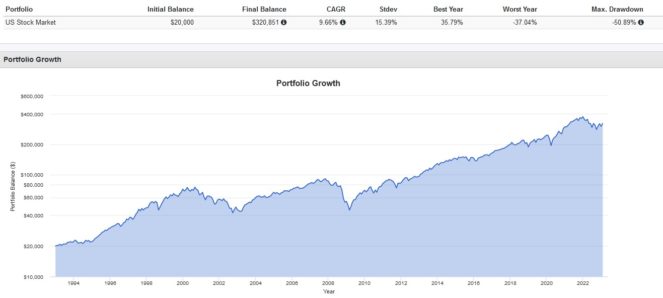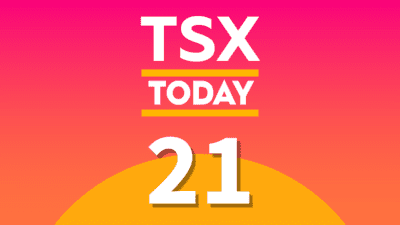Investing for the long term is the key to building wealth, and Canadian investors have access to numerous options that can help them achieve their financial goals, such as Registered Retirement Savings Plans (RRSPs) and Tax-Free Savings Accounts (TFSAs).
If you’re interested in maximizing your returns and minimizing your risk, you might consider the Motley Fool approach. It emphasizes diversification and a long-term outlook and avoids the temptation of getting rich quickly by chasing short-term gains.
In this article, we will demonstrate the benefits of a simple investment strategy that has stood the test of time: holding a low-cost, broadly diversified exchange-traded fund (ETF), and reinvesting dividends.
A historical example
Imagine you started investing 30 years ago in 1993 as a 25-year-old with $20,000 to spare. You didn’t know which stocks to pick, so you decided to take the one-size-fit-all approach by investing in an index fund that tracked the total U.S. stock market.
By doing so, your $20,000 investment was spread out among thousands of U.S. stocks from all 11 market sectors and all market cap sizes, ensuring a high degree of diversification. While you never contributed another dollar, every year, you committed to reinvesting dividends on time.
You also held this portfolio through thick and especially thin, never panic-selling, even when the markets crashed in 2000, 2001, 2002, 2008, 2018, 2020, and 2022. Here’s what your portfolio would have looked like 30 years later in January 2023:

By doing nothing more than holding and reinvesting dividends, your portfolio earned a 9.66% annualized return over 30 years, which is difficult for most investors to beat. Your $20,000 investment grew to $320,851. If you had made periodic contributions, the results would have been even greater.
Which ETFs to use?
Canadians have two index ETF options for investing in the total U.S. stock market. These options are both from Vanguard, with one being a Canadian-listed ETF and one being a U.S.-listed ETF.
In an RRSP, the ETF to use is the Vanguard Total Stock Market Index Fund ETF (NYSEMKT:VTI). This is because as a U.S. listed ETF, VTI is not subject to the IRS’s 15% foreign withholding tax on dividends if held in an RRSP. VTI charges a very low expense ratio of 0.03%.
In a TFSA, the ETF to use is Vanguard US Total Market Index ETF (TSX:VUN). This ETF trades in Canadian dollars. The TFSA is not exempt from foreign withholding tax, so converting currency and holding VTI here provides no benefits. VUN is more expensive at 0.16%.
The Foolish takeaway
VTI and VUN are simple, yet highly diversified investments that can be accessed at a low cost. They are excellent core portfolio holdings. For further diversification, consider adding a few Canadian stock picks of your choice to VTI and VUN (and the Fool has some great suggestions below).










